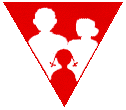As a mother, you would always want to give your baby the very best in life. And if you wanted to start your baby on the path to good health, breastmilk is the best.
Benefits for the baby
Breastmilk gives all the nutrients the baby needs.
Breastfeeding strengthens the Immune System and protects the baby from infections and allergies.
Breast milk is always safe, fresh, perfectly clean, just the right temperature, instantly available and is the most nutritious feeding system.
Benefits for the mother
Breastfeeding helps the Uterus contract back to normal size after having been stretched during pregnancy.
It also delays the return of your periods (though you should not count on it to prevent pregnancy). And it helps make time for you to be close to your baby.
Breastfeeding helps a woman to lose weight after birth. Mothers burn many calories during lactation as their bodies produce milk. In fact, some of the weight gained during pregnancy serves as an energy source for lactation.
Breastfeeding has been shown to reduce the risk of diseases like diabetes, arthritis and breast and ovarian cancers.
How does the milk actually come out of the breast?
When the baby nurses, the action of baby's jaws and tongue press down on the milk sinuses creating a suction that causes the milk to flow out of the breast and into the baby's mouth.
Body's response to the baby's suckling:
Infant suckling stimulates the nerve endings in the nipple and areola, which signal the pituitary gland in the brain to release two hormones, Prolactin and Oxytocin.
Prolactin causes alveoli to take nutrients (proteins, sugars) from your blood supply and turn them into breast milk.
Oxytocin causes the Cells around the alveoli to contract and eject milk down the milk ducts. This passing of the milk down the ducts is called the “let-down” (milk ejection) reflex.
Click here to see the animation on the flow of breastmilk animation
Right positions for breastfeeding
In order to breastfeed the baby comfortably, you may hold your baby in a number of ways. Your baby should not have to turn his or her head or strain his or her neck to nurse.
Cradle
Cradle the baby in your arm, his/her tummy against yours. The baby’s head will be resting in the bend of your elbow. The baby's whole body is facing you, tummy-to-tummy. Use your other hand to support the breast.
Across the lap
Hold the baby's shoulders in the palm of your hand with your arm supporting the baby's bottom. Bring the baby across your lap. Use your other hand under the breast from the side to keep the nipple in the baby's mouth.
Football
Place a pillow or two at your side to raise the baby to the level of your breast. Put the baby on the pillow with his/her bottom and legs touching the back of the chair.
Hold the baby's shoulders in the palm of your hand supporting the base of the baby's head. Use your other hand under the breast to keep it in the baby's mouth.
Lying down
Lie down on your side with the baby close to you so that you are facing each other. Some mothers place a pillow or rolled-up towel against the baby's back to keep the baby in position. A pillow behind your back may make you more comfortable.
Burping
After breast feeding ensure that your baby burps up any swallowed air by giving your baby soft strokes on the back.
How often should your baby be fed?
Your baby should be fed as often as he/she wants to be fed, which can be 8–12 times a day or more.
Let your baby nurse until he/she is satisfied. This may be for about 15–20 min at each breast.
Try to have your baby nurse from both breasts at each feeding.
Only after the first breast is empty shift to the second breast.
Ensuring quality and quantity of breastmilk: Nutrition is the key
Ensuring the quality and quantity of your breastmilk is important to provide your baby with all the nutrients he/she requires for its survival and growth during the first 6 months of life. And adequate nutrition is the key.
Why is the need for increased nutrient intake?
The source of nutrients needed for growth and development of baby is solely milk of the mother; in turn, the quality of the breastmilk is defined greatly by the nutrition of the mother. Hence, it is essential for the breastfeeding mother to follow a healthy diet that includes all the vital nutrients such as protein, calcium, iron and vitamins in the required amount and keeps both the mother and the baby healthy.
Taking a nutritional supplement helps in many ways:
Supplies your body with nutrients, which cannot be obtained through the diet in an adequate quantity.
Supplies nutrients that are lost through cooking.
Fulfills nutritional needs as required in a modern lifestyle, which is filled with over stretched working hours and poor eating habits.
Breastfeeding is a time of happiness; a time where the bonding between the mother and baby happens. The nutritional needs of a breast-feeding mother are high as the type of food she eats determines the quality and quantity of milk that will directly affect the health of her baby. Supplementation of nutrients to ensure perfect state of health of both the mother and the baby is essential.
Normal Call:9445820425 and 9445842405 Divya Hospital,Medavakkam Main Rd,20,Nr.Madipakkam Koot Road-Axis Bank,Madipakkam,Chennai 600091
Dr.Jacquline Divyanandh M.B.B.S, DGO Obstetrician&Gynecologist.
Other Specialties..
Dr.Jacquline Divyanandh M.B.B.S, DGO Obstetrician&Gynecologist.
Other Specialties..
Know About Pregnancy Healthy Pregnancy Fertility basics Planning for pregnancy Want a smart baby? Pregnancy health Eating For Two Your growing baby Exercise in pregnancy Benefits of exercising,Recommended exercises Pregnancy Weight Gain Sex During Pregnancy Travel During Pregnancy Stress in pregnancy High Blood Pressure Diabetes In Pregnancy Labor C-section New mother care Healthy Breast Feeding Postpartum depression Stretch marks Diet during Breast Feeding Birth Control choices A Pill In Time Miscarriage ....Normal Call:9445820425 and 9445842405




